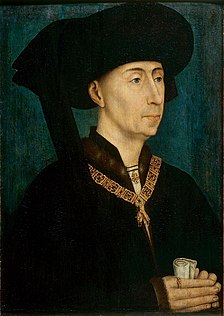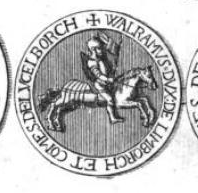 W
WThe counts of Limburg ruled a medieval county with its capital at Limbourg-sur-Vesdre, lying between Liège and Aachen. They rose to prominence when one of them was appointed Duke of Lower Lorraine. Though Lorraine was later confiscated, the ducal title was kept within the family, transferred to the county of Limburg, and this was eventually ratified by the Holy Roman Emperor. Thereafter, the dukes of Limburg were one of several claimant lines of heirs to the title of the old duke of Lower Lorraine. Their title was eventually inherited by their competitors the dukes of Brabant, and became part of the large collection of titles of the Burgundian Netherlands, eventually passing to the Hapsburgs.
 W
WThe Duchy of Limburg or Limbourg was an imperial estate of the Holy Roman Empire. Its chief town was Limbourg-sur-Vesdre, is today located within the Belgian province of Liège, with a small part in the neighbouring province of Belgian Limburg, within the east of Voeren.
 W
WCharles, nicknamed the Bold, was the Duke of Burgundy from 1467 to 1477.
 W
WHenry III was the Duke of Limburg and Count of Arlon from 1165 to his death. He was the son and successor of Henry II and Matilda of Saffenberg.
 W
WPhilip I, Duke of Brabant, also known as Philip of Saint Pol, was the younger son of Antoine, Duke of Brabant and Jeanne of Saint-Pol, and succeeded his brother John IV as Duke of Brabant in 1427. He had already been given Saint-Pol and Ligny as an appanage on the death of his grandfather, Waleran III of Luxembourg, Count of Ligny, in 1415 at the Battle of Agincourt.
 W
WPhilip the Good was Duke of Burgundy from 1419 until his death. He was a member of a cadet line of the Valois dynasty, to which all the 15th-century kings of France belonged. During his reign, the Burgundian State reached the apex of its prosperity and prestige and became a leading center of the arts. Philip is known in history for his administrative reforms, his patronage of Flemish artists such as Jan van Eyck and Franco-Flemish composers such as Gilles Binchois, and the capture of Joan of Arc. In political affairs, he alternated between alliances with the English and the French in an attempt to improve his dynasty's position. As ruler of Flanders, Brabant, Limburg, Artois, Hainaut, Holland, Luxembourg, Zeeland, Friesland and Namur, he played an important role in the history of the Low Countries.
 W
WWaleran III was initially lord of Montjoie, then count of Luxembourg from 1214. He became count of Arlon and duke of Limburg on his father's death in 1221. He was the son of Henry III of Limburg and Sophia of Saarbrücken.
 W
WWilliam I was a Prince of Orange, the King of the Netherlands and Grand Duke of Luxembourg.
 W
WWilliam II was King of the Netherlands, Grand Duke of Luxembourg, and Duke of Limburg.
 W
WWilliam III was King of the Netherlands and Grand Duke of Luxembourg from 1849 until his death in 1890. He was also the Duke of Limburg from 1849 until the abolition of the duchy in 1866.